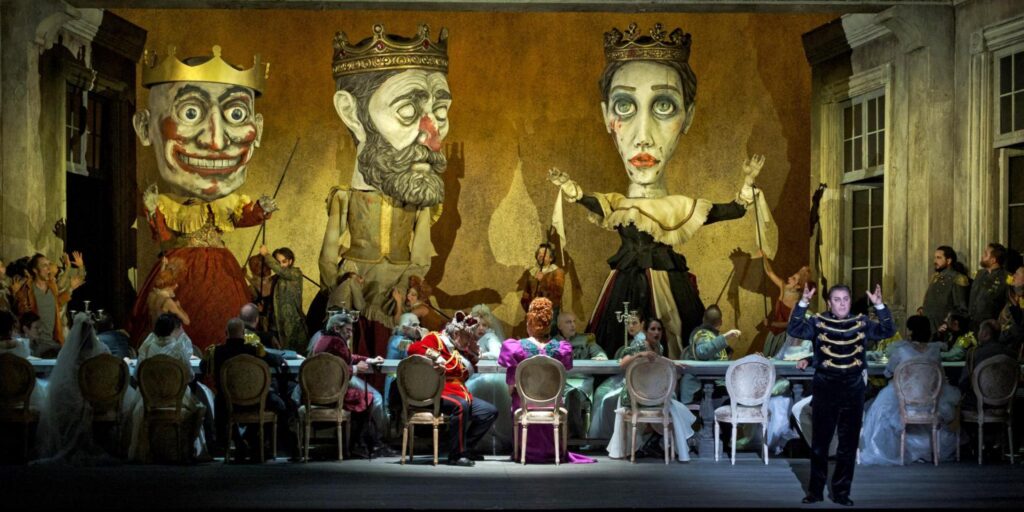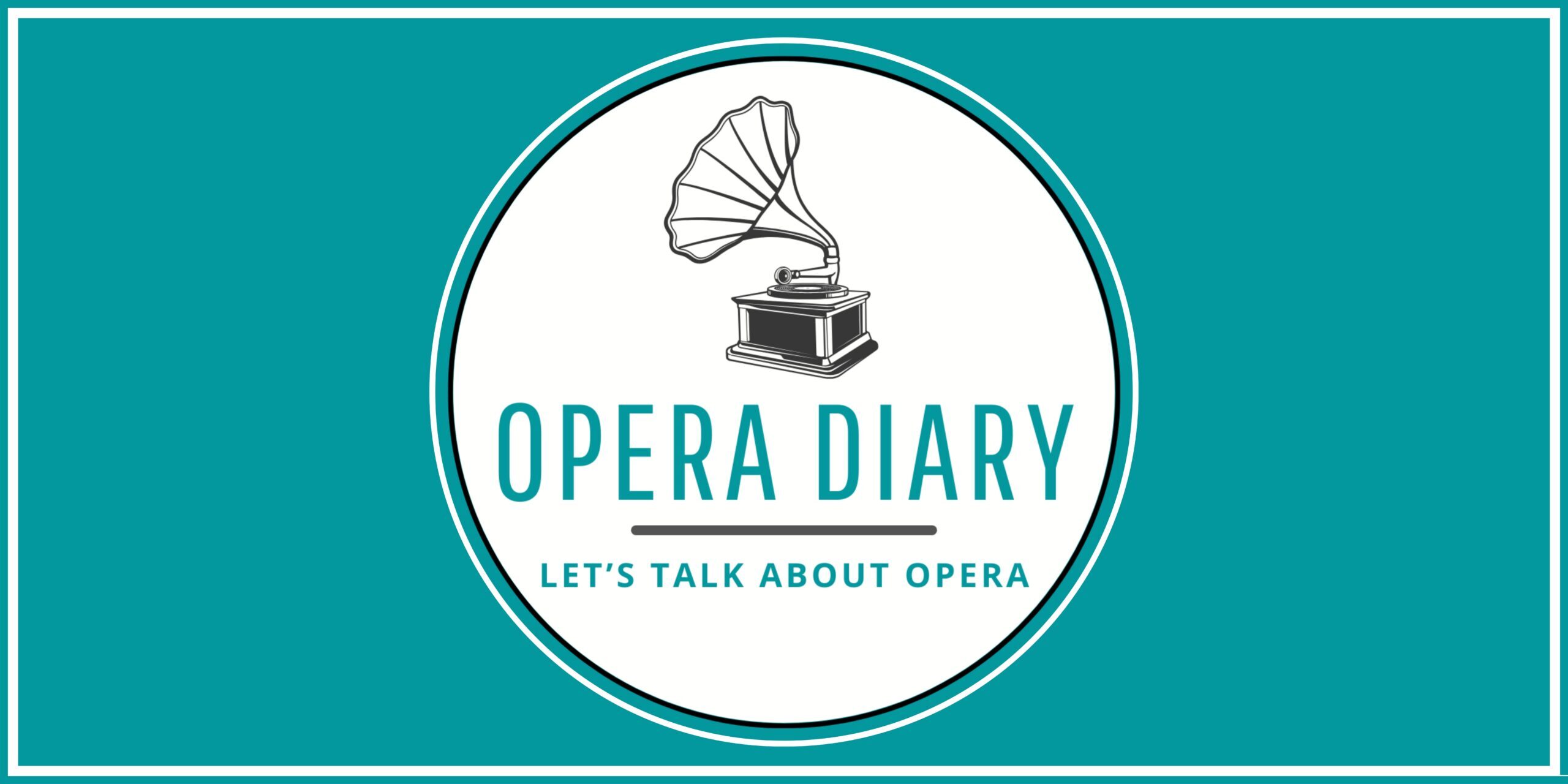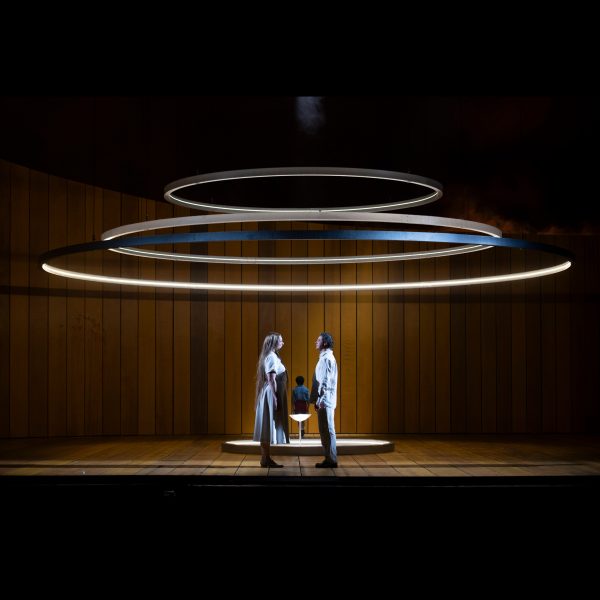“To be or not to be a tenor? That is the question”
The Teatro Regio in Torino is staging the world première version of Ambroise Thomas’ masterpiece with the title role entrusted to a tenor voice rather than a baritone. The baritone version has always been performed in all theatres and is related to great singers such as Sherill Milnes, Thomas Hampson, and Ludovic Tézier. At the time of the composition of the opera, which was first performed at the Opéra de Paris on 9 March 1868, Thomas, fresh from the success of the opera Mignon, did not have a top-class tenor for the title role. Going against the rules of grand-opéra, which usually fielded a vocal quartet made up of tenor, soprano, bass, and contralto in the title roles, the composer adapted the character of Hamlet for the splendid baritone voice of the artist Jean-Baptiste Faure, who the year before had created the role of Rodrigue in Verdi’s Don Carlos.
The result was a more mature, virile protagonist, less prone to the languor and neurasthenia of Shakespeare’s original. The greatest English writer has always been much loved by composers of operas, and plundered for librettos taken from his most famous works, as in the case of Rossini (Othello), Bellini (Capuleti e Montecchi), Verdi (Macbeth, Othello, Falstaff), Gounod (Roméo et Juliette), generally distorting the original complexity in favor of stories that adapted well to the scenic and vocal conventions of the time. In the second half of the nineteenth century, the evolution of the French grand-opéra of Meyerbeer, Halevy gradually abandoned the historical setting in favor of literary adaptations, as for instance for the aforementioned Gounod, and Thomas himself who, inspired by the compositions of Goethe and Shakespeare, drew from them, works of bourgeois inspiration, and moral matrix of the second French empire.

Even more complex was the adaptation for the opera of Hamlet, one of the most demanding and problematic masterpieces in the history of theater. The librettists Michel Carré and Louis Barbier were inspired by a French adaptation made by Alexandre Dumas père, reducing the number of characters and focusing on the psychological situation of Hamlet and Ophélie, almost a romantic drama like Lucia di Lammermoor with the appearance of the ghost and the madness scene.
Coming to today’s performance in Turin, the Teatro Regio carries out an operation of high cultural value and indisputable public success. After Halévy’s Juive, Abbiati Award for best Italian show in 2023, the exploration and proposal of the French repertoire of the nineteenth century continues, proposing a perfect staging of Hamlet, from all points of view, scenic, vocal and musical. The world’s first scenic revival of the tenor version makes sense in the presence of the American tenor John Osborn as protagonist, a reference interpreter for this type of repertoire. The perfect domain of the French language and style, the fully lyrical timbre, combined with a masterly phrasing and interpretation, make him a young, hallucinated and neurotic Hamlet, destined to succumb to events and the terrible fate of his family. Equally
enchanting is the Ophélie of the Catalan soprano Sara Blanch, who, with a full and secure high register, finds herself completely at ease in the virtuosity required by the part and in the full vocal performance of the delicate girl in unhappy love with Prince Hamlet. The scenic and vocal interpretation perfectly render the evolution and disillusionment of the character, up to a scene of madness masterfully rendered with the enormous bridal veil on stage that becomes the waves into which she throws herself in despair.

Clémentine Margaine’s Gertrude is impressive in terms of volume of voice and temperament. In the opera, unlike the original, she is an accomplice in the killing of her husband, Hamlet’s father, making the mother-son relationship even more conflictual. Riccardo Zanellato’s Claudius is powerful and tormented, especially in the great scene of the third act “je t’implore, ô mon frère”. Julien Henric’s Laerte is also excellent and the presence of Alistair Miles as “spectre du roi” is a real luxury. The excellent musical result is ensured by the conduction of Jérémie Rhorer, who led the magnificent ensembles of the Regio of Turin, in an overwhelming musical reading, both in the great “grand-opéra” scenes and in the more introspective and lyrical moments, always ensuring a perfect balance with the stage. The performance of the Chorus is absolutely
noteworthy.
The direction of Jacopo Spirei, chooses a late nineteenth-century setting for a show of strong visual impact, both in the large ensemble scenes and in the acting of the singers, in particular the two protagonists. Among the most successful moments, in addition to the aforementioned madness scene, we remember the pantomime of the second act with the gigantic puppets and the final scene with the morgue in which the corpses are laid out, including that of Ophélie.
The show, among the most beautiful seen this year, had a triumphal outcome with long and interminable ovations for all the protagonists.
CAST
Hamlet – John Osborn
Ophélie – Sara Blanch
Gertrude – Clémentine Margaine
Claudius – Riccardo Zanellato
Laerte – Julien Henric
Le Spectre du roi – Alastair Miles
Marcellus – Alexander Marev
Horatio – Tomislav LAvoie
Polonius – Nicolò Donini
Conductor – Jérémie Rhorer
Direction – Jacopo Spirei
Sets – Gary McCann
Costumes – Giada Masi
Choreography – Ron Howell
Lighting – Fiammetta Baldiserri




